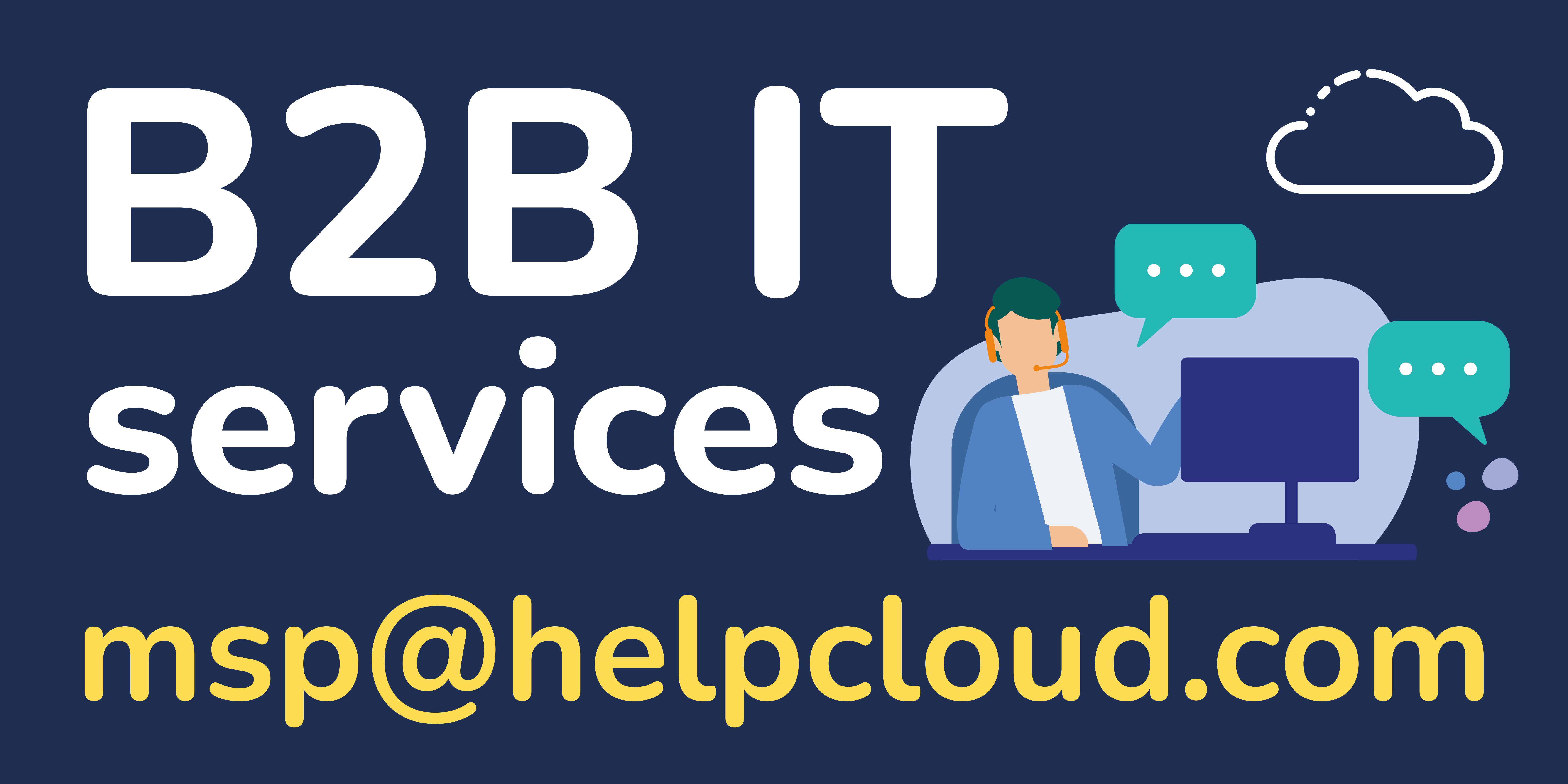In the ever-evolving landscape of technology, businesses are increasingly turning to IT Managed Service Providers (MSPs) to handle their IT needs. While outsourcing IT services can bring numerous benefits, it's not without its challenges. Many organizations encounter struggles when working with MSPs, ranging from communication issues to service quality concerns. In this blog post, we'll delve into some common challenges faced by businesses partnering with IT managed service providers and explore effective resolutions to overcome these hurdles.
Communication Breakdowns:
We're going to focus the most on communication as an issue. With any aspect of life, communication is key and lack of communications is often what leads to failure of any relationship.
Communication is the lifeblood of any successful business relationship, and when it comes to working with IT Managed Service Providers (MSPs), the stakes are particularly high. Despite its critical role, effective communication remains one of the most common challenges faced by organizations engaging with MSPs. Let's explore this issue in more detail and examine practical solutions to overcome communication breakdowns.

1. Misaligned Expectations:
A frequent cause of communication breakdowns is the misalignment of expectations between the client and the MSP. This misalignment can manifest in various ways, such as differing interpretations of service levels, response times, or even the scope of services provided.
Resolution: Clearly Defined Service Level Agreements (SLAs)
To mitigate misaligned expectations, organizations and MSPs should invest time and effort in clearly defining and documenting Service Level Agreements (SLAs). SLAs should outline in detail the expected response times, resolution times, and performance metrics. This document serves as a reference point for both parties, ensuring that everyone is on the same page regarding the level of service to be provided.
2. Insufficient Reporting and Feedback:
Another aspect contributing to communication breakdowns is the lack of transparent reporting and feedback mechanisms. Clients may feel left in the dark about the status of their IT operations, leading to frustration and a sense of disconnection.
Resolution: Regular Reporting and Feedback Sessions
Establishing a routine for regular reporting and feedback sessions is crucial. MSPs should provide clients with detailed reports on the performance of their IT systems, including any incidents, their resolution status, and proactive measures taken. These sessions offer an opportunity for clients to ask questions, express concerns, and provide feedback. A transparent feedback loop fosters a collaborative atmosphere and ensures that both parties are actively engaged in the success of the IT partnership.
3. Inadequate Communication Channels:
The choice of communication channels plays a significant role in the success of any collaboration. Problems arise when there's a mismatch in preferred communication methods between the client and the MSP.
Resolution: Tailored Communication Plans
Understanding the communication preferences of both parties is essential. Some clients may prefer regular email updates, while others may opt for a project management platform or even direct communication through dedicated messaging apps. MSPs should work closely with clients to establish a communication plan that aligns with their preferences, ensuring a seamless flow of information and reducing the likelihood of misunderstandings.

4. Lack of Proactive Communication:
Effective communication is not just about responding to issues—it's also about being proactive. MSPs that only communicate when problems arise may create a perception of reactive rather than proactive support.
Resolution: Proactive Communication Strategies
MSPs should adopt a proactive communication approach, keeping clients informed about potential issues, system updates, and upcoming changes. Regular check-ins, newsletters, and educational resources can help maintain an ongoing dialogue between the client and the service provider. Proactive communication not only builds trust but also demonstrates a commitment to the client's success.
5. Cultural and Language Barriers:
For organizations engaging with MSPs located in different regions or countries, cultural and language differences can present additional communication challenges. Nuances in language and cultural expectations may lead to misunderstandings.
Resolution: Cross-Cultural Training and Language Support
MSPs operating in diverse environments should invest in cross-cultural training for their teams to foster cultural awareness and sensitivity. Additionally, providing language support, such as translation services or bilingual staff, can help bridge the communication gap. Both parties should make a concerted effort to understand and accommodate each other's cultural nuances, ensuring effective and respectful communication.
6. Limited Access to Key Stakeholders:
Sometimes, communication breakdowns occur when key stakeholders on either side are inaccessible or not adequately involved in the communication process. This lack of direct engagement can hinder the resolution of issues and decision-making.
Resolution: Designated Points of Contact and Escalation Protocols
Establishing designated points of contact on both sides is crucial for streamlining communication. These individuals should be well-versed in the technical aspects of the partnership and have the authority to make decisions or escalate issues when necessary. Clear escalation protocols ensure that any problems requiring higher-level attention are addressed promptly.
Conclusion:
Communication breakdowns between organizations and IT Managed Service Providers can impede the success of the partnership and hinder the achievement of business objectives. By proactively addressing issues related to misaligned expectations, insufficient reporting, communication channels, proactive communication, cultural differences, and access to key stakeholders, both parties can build a strong foundation for collaboration. Effective communication is a dynamic and ongoing process that requires continuous improvement, adaptation, and a shared commitment to transparent and open dialogue. When organizations and MSPs prioritize communication, they pave the way for a successful and mutually beneficial partnership in the complex realm of IT management.

Lack of Alignment with Business Goals
Another common struggle is the misalignment of the MSP's services with the organization's business goals. It's crucial that the IT services provided align with the strategic objectives of the business to ensure maximum value.
Resolution: Aligning IT Services with Business Objectives
To overcome this challenge, organizations should invest time in clearly communicating their business goals to the MSP. This collaborative approach ensures that the IT services provided are tailored to meet specific business needs. Regular reviews and assessments can also help both parties stay aligned, making adjustments as necessary to ensure continued alignment with evolving business objectives.
3. Inadequate Service Quality
Issues related to service quality, including downtime, slow response times, and unresolved problems, can severely impact business operations. Organizations often find it challenging to maintain high service standards when relying on external providers.
Resolution: Service Level Agreements (SLAs) and Continuous Monitoring
Implementing well-defined Service Level Agreements (SLAs) is essential for setting clear expectations regarding service quality. These agreements should outline response times, resolution times, and performance metrics. Continuous monitoring and regular performance reviews can ensure that the MSP is meeting the agreed-upon standards. In case of deviations, adjustments and improvements can be implemented promptly.
4. Security Concerns
As cyber threats become more sophisticated, security is a paramount concern for businesses entrusting their IT operations to MSPs. A lack of transparency and confidence in the security measures implemented by the service provider can lead to anxiety among clients.
Resolution: Rigorous Security Assessments and Collaboration
To address security concerns, organizations should conduct thorough security assessments before partnering with an MSP. This includes evaluating the provider's security policies, protocols, and compliance with industry standards. Collaborating closely with the MSP on security measures, such as data encryption, regular audits, and employee training, can further strengthen the security posture and build trust.

5. Limited Scalability and Flexibility
Businesses, especially those experiencing growth, need IT services that can scale seamlessly with their evolving needs. Many organizations face challenges with MSPs that struggle to adapt to changing requirements.
Resolution: Scalability Planning and Flexibility Agreements
To overcome scalability issues, organizations should engage in proactive planning with their MSPs. This includes forecasting future IT needs and ensuring that the service provider has the capacity and flexibility to accommodate growth. Flexible contracts that allow for adjustments in service levels and resources can provide the agility needed to navigate changing business dynamics.
6. Cost Overruns
Unforeseen costs can be a significant source of frustration for businesses working with MSPs. Inaccurate cost estimates, hidden fees, and unexpected expenses can strain the budget and erode the perceived value of outsourcing IT services.
Resolution: Transparent Pricing and Regular Audits
Establishing transparent pricing models from the outset is crucial to avoid cost overruns. Both parties should work together to ensure a clear understanding of the pricing structure and any potential additional costs. Regular financial audits can help identify and address any discrepancies, ensuring that both parties are on the same page regarding costs.
Where There's a Will There's a Way
While partnering with an IT Managed Service Provider offers numerous advantages, it is not without its challenges. Effective communication, alignment with business goals, service quality assurance, security measures, scalability planning, and cost management are key areas where organizations may face hurdles. By proactively addressing these challenges with the suggested resolutions, businesses can foster a positive and productive relationship with their MSPs, ensuring that outsourced IT services contribute to the overall success and growth of the organization. Regular reviews, open communication, and a commitment to continuous improvement will be essential to navigating the complex landscape of IT outsourcing successfully.

